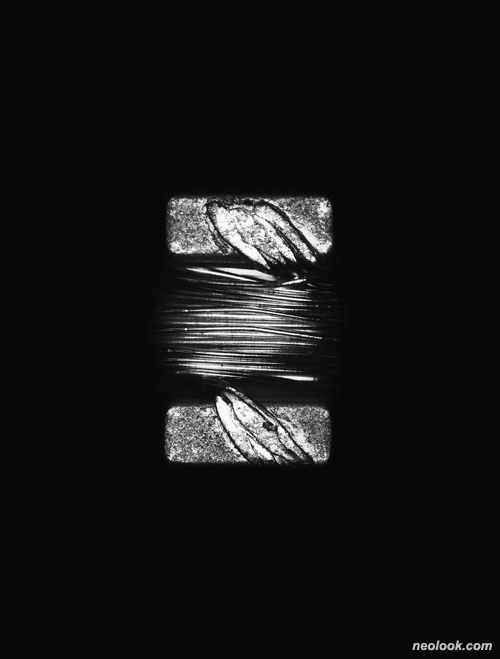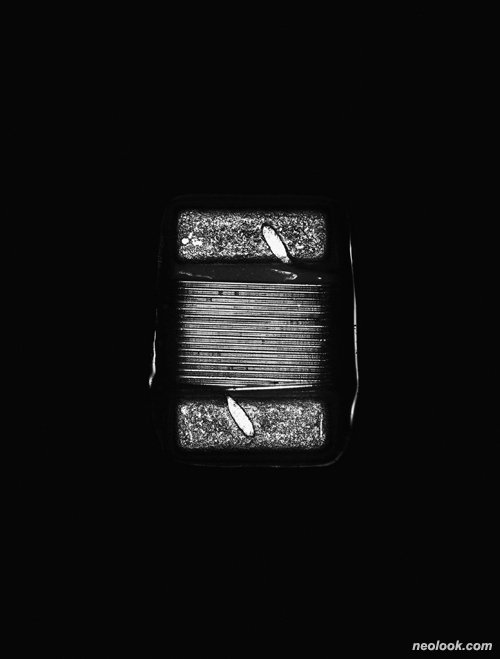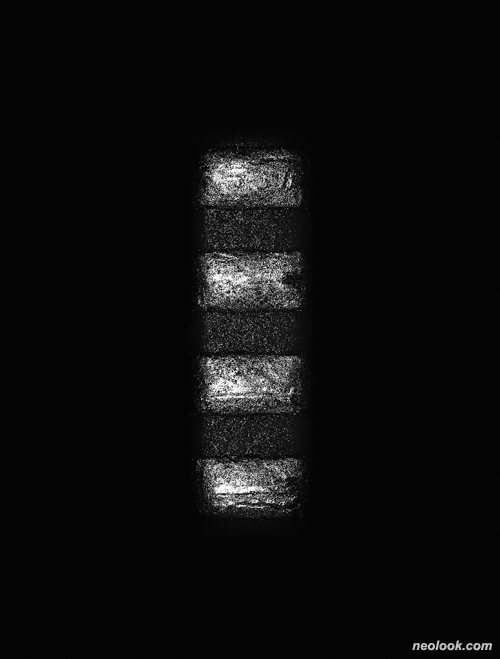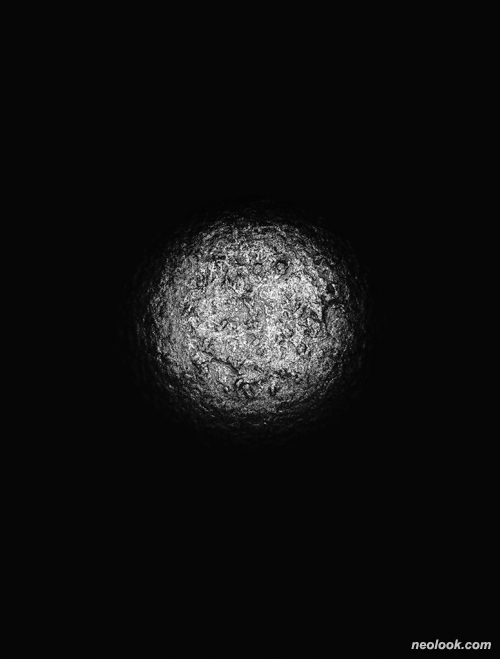- ● homepage
- ● archives
- ● restoration
- ● books
- ● big banners
- ● post board
- ■ neo's search
- ■ about us
- ■ 게재방법 안내
- 개인정보처리방침

- [email protected]
- Tel. 02_335_7922
- Fax. 02_335_7929
- 10:00am~04:30pm
- 월요일~금요일
- 3/3(월) 대체공휴일

보이지 않는 존재 Invisible beings
윤한종展 / YOONHANJONG / 尹漢鍾 / photography 2018_0711 ▶ 2018_0723
● 위 이미지를 클릭하면 네오룩 아카이브 Vol.20180404b | 윤한종展으로 갑니다.
초대일시 / 2018_0711_수요일_05:00pm
오프닝 및 사진집 출판기념회
갤러리 나우 작가상 NoW Advance Exhibition부문 수상작가展
관람시간 / 11:00am~07:00pm
갤러리 나우 GALLERY NOW 서울 종로구 인사동길 39 (관훈동 192-13번지) 성지빌딩 3층 Tel. +82.(0)2.725.2930 www.gallery-now.com
제 8회 갤러리 나우 작가상 공모에서 NoW Advance Exhibition(2nd Brand)부문에 선정된 작가 윤한종의 『보이지 않는 존재 Invisible Beings』전이 열린다. NoW Advance Exhibition은 사진의 다양한 변화를 수용하여 전공자, 비전공자에 관계없이 폭넓고 새롭게 사진의 시각을 확장하고 성장해 나아가고 있는 작가를 지원하는 프로그램이다. ● 윤한종은 기존의 재현을 통해 개념을 표현하는 일반적인 사진 절차에서 벗어나 아주 작은 전자부품을 소재를 한 화면에 모아 새로운 이야기를 한다. 단순히 이미지만을 담아내는 것이 아니라 또 다른 이야기를 만들어내는 것이다. 이러한 새로운 접근방식을 높이 평가하여 갤러리 나우작가상 NoW Advance Exhibition부문에 선정하였다. ● 윤한종은 엔지니어이자 사업가로서 30년 가량 산업현장에서 산업용 카메라를 이용한 검사장치를 개발하였는데, 이번 전시에서는 이런 산업용 카메라와 렌즈, 조명을 이용, 1~4mm가량의 아주 작은 전자부품을 촬영한 작품을 선보인다. 이번 전시는 개별 전자부품을 극단적으로 확대한 'Individual_개인 시리즈'와 1만개의 전자부품을 촬영한 10,000장의 사진을 하나의 작품으로 만든 Society_사회 시리즈' 로 구성되었다. 전자부품이라는 오브제를 사용한 것도 신선하지만, 산업용 카메라와 조명을 이용하여 작품화한 것도 새롭다. 더욱이 그 작품을 위하여 정밀 로보트를 이용하고 직접 개발한 소프트웨어 프로그램을 이용하여 작품화하였다는 것은 다분히 창의적인 시도로 보인다. ■ 갤러리 나우

- 윤한종_Curious 063_피그먼트 잉크젯 프린트_110×83cm_2017
윤한종의 기계의 시각으로 본 세계상 ● "눈아, 본 것을 부정해라! (Forswear it, sight!)" (윌리엄 셰익스피어, 로미오와 줄리엣 중) ● 엔지니어이자 사업가이자 작가인 윤한종은 기계의 눈이 어디까지 볼 수 있나 알아보기 위해 자신이 다루는 전자부품 검사기의 정밀한 눈을 이용해 전자부품들을 사진 찍었다. 보기에 단순해 보이는 이 사진들은 오늘날 기술과 시각과 인지에 대한 많은 것들을 함축하고 있다. 우선, 이 사진들이 나오는 과정은 우리가 일반적으로 알고 있는 '사진'이 만들어지는 과정과는 많이 다르다. 물론 이런 기계로 사진 찍는 목적도 다르다. 윤한종이 사진 찍는 목적은 전자부품의 표면에 있는 결함을 찾아내는 것이다. 옛날에는 제품의 결함을 사람의 눈으로 찾아냈지만 이제 산업현장에서 사람의 눈으로 무엇을 검사하는 시대는 지났다. 전자부품의 표면에 있는 결함을 찾아야 하는 이유와 절차는 상상 이상으로 복잡하다. 그것은 오늘날 복잡하게 발달한 산업의 중요한 측면을 품고 있다. 왜 결함을 찾아내야 할까? 작은 전자부품의 결함 때문에 고가의 기계장비 전체가 못 쓰게 되는 경우가 있다. 또한 전자부품의 불량률은 그것을 제조한 회사의 신뢰도에도 영향을 미치기 때문에 결함은 반드시 찾아내야 한다.

- 윤한종_Consistent 073_피그먼트 잉크젯 프린트_110×83cm_2017
윤한종은 자신이 개발하고 판매하는 이 검사장치를 이용해서 '작품'을 만들어냈다. 그것은 원래의 대상이 무엇이었는지 알아볼 수 없을 정도로 확대된 전자부품의 모습이다. 그런데 고배율로 찍은 전자부품의 모습은 생각보다 그렇게 시각적으로 자극적이지 않다. 그래서 윤한종은 자신의 '작업'에 인간적인 개입을 한다. 즉 산업적으로 생겨난 이미지는 우리가 기대하는 스펙터클을 가지고 있지 않기 때문에 뭔가 관심의 흔적을 넣은 것이다. 이렇게 해서 만들어진 작업 혹은 작품에 윤한종은 '보이지 않는 존재들 Invisible Beings'라는 제목을 붙였다. 이 물건들은 육안에는 보이지 않는 것들이기 때문에 이 제목은 매우 적절하다. 그것은 네덜란드에서 1590년에 현미경이, 1608년 망원경이 발명된 이래로 끊임없이 보이지 않는 세계를 탐색해온 인간의 노력을 압축하고 있는 제목이기도 하다.

- 윤한종_Curious 062_피그먼트 잉크젯 프린트_45×34cm_2016
그렇다면 윤한종의 작업에서 양자가 어떤 식으로 섞여 있었던 것일까? 대부분의 기계들이 그렇지만, 잘 관찰해 보면 예술작품 만큼, 혹은 그 이상 아름답다. 예술작품을 만드는데 필요한 창의성과 감성, 제작의 치밀함이 기계에도 들어 있기 때문이다. 눈에 보이지도 않을 만큼 작은 전자부품을 아주 빠른 속도로 이동시키면서 올바른 자세로 놓여 있게 해주는 피더와 가이드의 메커니즘은 정교할 뿐 아니라 아름답다. 그 메커니즘을 이루는 금속 부품은 스케일은 아주 작을지언정 그 표면의 질감이나 광택은 헨리 무어의 조각품 못지않은 깊은 맛을 풍긴다. 그것은 인간이 아주 오랜 옛날부터 도달하고자 했던 무엇이든 보아내는 눈의 첨단적인 형태이다.

- 윤한종_Curious 064_피그먼트 잉크젯 프린트_45×34cm_2016
한 알의 모래알 속에 우주가 들어 있고 그 우주를 들여다보면 또 모래알들로 돼 있고, 그 모래알을 들여다보면 또 우주가 나오듯이, 전자부품과 검사기는 어느 것이 어느 것의 우위에 있는 것이 아니라 서로서로 중첩돼 있는 세계다. 윤한종의 작품제목인 '보이지 않는 세계'라는 말은 그런 중첩된 세계의 모습이 육안에는 보이지 않는다는 뜻 아닐까? ● 이제 무엇이 과학기술이고 무엇이 예술인지 구분하는 것 자체가 의미가 없어 보인다. 기계가 사람을 대체한 이 시대에 기계가 예술마저 대체한 것이 통쾌하게 느껴지는 이유는 무엇일까? ■ 이영준

- 윤한종_Devoted 008_피그먼트 잉크젯 프린트_45×34cm_2017

- 윤한종_Consistent 067_피그먼트 잉크젯 프린트_45×34cm_2017
보이지 않는 존재 Invisible Beings ● 사진은 물리적인 존재를 기록하기 위한 발명 도구이다. 사진이 발명된 이후로 오랫동안 사진가들은 동시대의 주요사건과 대상을 광학적 한계 내에서 표현하였다. 사진의 기록은 보기에는 정확한 듯 보이지만 완벽한 진실을 의미하지는 않는다. 그럼에도 불구하고 사진은 촬영자가 관찰하고 인식한 사유의 결과물인 것은 분명하다. ● 자연계의 모든 것은 고유의 기능과 모습으로 존재하고 있다. 그 존재는 인간의 시각적 한계 내에서만 인식된다. 너무나 작은 존재는 인식할 만큼 충분한 시각정보를 제공하지 못하기 때문에 사유의 대상이 되기 어렵다. 기계장치를 이용한 고배율 사진은 대상에 대한 충분한 시각 정보를 제공하여, 보이지 않는 존재(Invisible Beings)를 볼 수 있는 존재(Visible Beings)로 인식하게 한다. 또한, 微小하여 개념적으로만 여겨지던 존재(Conceptual Beings)를 실재적 존재(Real Beings)로 편입시킨다.

- 윤한종_Consistent 069_피그먼트 잉크젯 프린트_45×34cm_2017
보이지 않는 존재(Invisible Beings) 연작은 개인 시리즈(Individual Series)와 사회 시리즈(Society Series)로 나뉜다. 개인 시리즈(Individual Series)는 고정도 산업용 카메라를 이용하여 1~4mm 크기의 양품 또는 불량 전자부품을 고배율로 촬영했다. 극단적으로 확대된 정물은 맨눈으로는 보이지 않는 존재를 볼 수 있는 존재로 인식하고 사유하게 한다. 이 작업은 전자부품이 사람과 비슷하다는 관점에서 시작하였다. 아무리 완벽한 사람이라도 자세히 들여다보면 그 사람의 내면은 실수와 실패, 상처와 아픔으로 점철되어있기 때문이다. 사회 시리즈(Society Series)는 10,000개의 전자부품을 각 1회씩 촬영하여, 각각의 사진을 오려서, 100x100으로 나열한 작품이다. 10,000개의 부품은 개인들이 부대껴서 사는 사회를 의미하며, 각 부품은 실패의 경험을 가진 상처받은 개인이라고 생각하며 작업하였다. ● 작업대상인 전자부품은 오래전부터 생업의 한 요소에 불과했으나, 보이지 않는 존재(Invisible Beings) 작업 동안 관찰과 사유를 통해 성찰의 대상으로 다시 다가왔다. 이런 대상의 재현은 산업적 목적에 부합하는 이미지에서는 볼 수 없는 새롭게 발견된 존재이며, 이론적으로 설명하는 빛에 대한 생경한 경험의 표현이다. 이 연작이 관람자들이 생각하는 것과 다를 수도 있으나 같이 고민하는 화두가 되었으면 하는 바람이다. ■ 윤한종

- 윤한종_Consistent 074_피그먼트 잉크젯 프린트_45×34cm_2017

- 윤한종_Curious 040_피그먼트 잉크젯 프린트_45×34cm_2016
Yoon Hanjong's world viewed from the perspective of machines ● "Forswear it, sight!" - Romeo and Juliet by William Shakespeare ● Engineer-cum-businessman and artist Yoon Hanjong takes photographs of elaborate electronic components using a visual inspection systems for electronic components (hereinafter referred to as an inspection system) to see just how finely the human eye can see. These seemingly pared-down photographs speak volumes about current technology, vision, and perception. First of all, the process of producing these pictures is quite distinct from that of the common photographs we know. Of course, photographs taken by machines have a different purpose. The photographs Yoon takes with an inspection system have a clear purpose: to detect defects on the surface of an electronic component. In the past, the human eye was used to find flaws but nowadays it is no longer used to make inspections at industrial sites. The procedures adopted to detect defects on the surfaces of electronic components are complicated beyond our imagination. This includes important aspects of today's intricately evolved industries. The problem is that high-priced mechanical equipment can become useless due to defects in these tiny components. All defects must be detected since the rate of defects in electronic components can affect the credibility of the company that produced it. ● Yoon has produced his works using this system which he has developed and sold. They are figures of electronic components that are magnified to a point where the original objects are no longer distinguishable. The electronic components photographed at high magnifications are initially not visually provocative. Yoon thus interferes in his "work" in a benevolent fashion. That is to say, as industrially engendered images have nothing spectacular for us to look forward to, he brought something to his works so as to arouse interest. Yoon named theses works "Invisible Beings", which is a proper name for objects that are invisible to the naked eyes. Invisible Beings is a title that denotes human efforts to explore an invisible world ever since the invention of the microscope in 1590 and the telescope in 1608. ● Just how were they blended? If we examine them closely, we may discover that most machines are as beautiful as or even more beautiful than artworks. This is why the creativity, emotion, and even sophistication necessary for creating works of art play a role in manufacturing machines. The mechanisms of feeders and guiders that move electronic parts at very quick speeds and resituate them into correct positions are not only exquisite but also beautiful. The metal parts consisting of those mechanisms are very small but their surface texture and gloss feel as profound as Henry Moore's sculptures. That is an up-to-date form of the eye that can see everything and humans have tried to achieve from ancient times. ● Just like how a grain of sand holds the universe, and the universe holds a millions of grains of sand, electronic components and inspection systems are not in a hierarchy; they are rather two overlapped worlds. Could "Invisible Beings", the title of Yoon's works, mean those overlapped worlds are invisible to the naked eyes? ● It seems meaningless to distinguish what is scientific technology and what is art. At the time where technology has replaced humans, why does it feel thrilled to see technology replaces art? ■ LEEYOUNGJUNE
Invisible Beings ● Photography is a tool to document physical beings. Since the invention of photography, photographers have represented the events and objects of their times within optical limits. A photographic record seems accurate but is not a complete truth. Nevertheless, a photograph is obviously an outgrowth of a photographer's observations and perceptions. ● Everything in nature has its own function and appearance. That being is perceived within humanity's limitations of visual representation. A very small being cannot be an object of thought because it cannot provide enough visual information to be of interest. High-magnification photographs produced using a mechanical device makes invisible beings visible by offering sufficient visual information. They also bring beings that are so small they are considered merely conceptual into the realm of real beings. ● Invisible Beings is divided into two categories: Individual Series and Society Series. Individual Series features defective electronic components measuring 1-4mm that were shot using an industrial camera with lens of high precision and magnification. Enlarged to an extreme, these still lifes enable us to perceive invisible things as visible so that we may reason with them. This series was inspired from the idea that electronic components might be akin to men in that no matter how perfect one is, his or her inner world is usually fraught with mistakes, failures, scars, and pain. Society Series features 10,000 electronic components that were photographed once each and then arranged in a 100 x 100 format to create a single picture. The 10,000 components stand for a society in which each individual interacts with one another. I worked on this while thinking of them as individuals fraught with scars and experiences of failures. ● Electronic components have long been nothing but objects for making a living but while executing the series Invisible Beings they became objects of introspection through observation and contemplation. They are newly discovered beings not found in images corresponding to any industrial purpose and are representations of our unfamiliar experience with light that can be explained only theoretically. This series is expected to serve as an opportunity for viewers to ponder something together, even though it may go against what they have originally thought. ■ YOONHANJONG
Vol.20180711c | 윤한종展 / YOONHANJONG / 尹漢鍾 / photography

